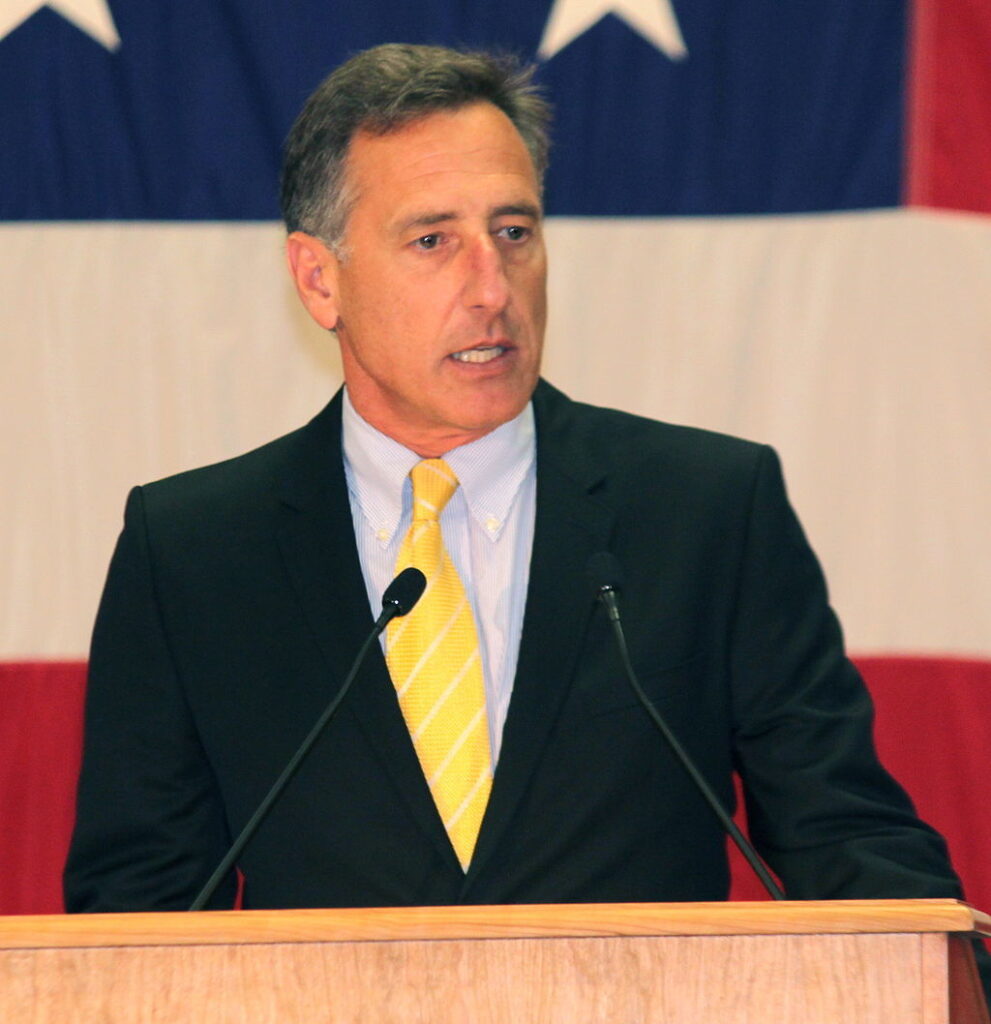Vermont Gov. Peter Shumlin is currently in the process of implementing a single-payer health care system in his state—though he has been reluctant to call it that.
Shumlin’s single payer approach was authorized by a waiver under President Obama’s law, with the state’s new health insurance exchange functioning as a temporary stop before a full transition to a single payer system, branded as Green Mountain Care.
In an interview with Politico at the Democratic National Convention in North Carolina, Shumlin, a Democrat, said his single payer approach was “pragmatic” and “efficient” and that it would serve to slow the growth of government health care spending.
But according to Bruce Shields, president of the Ethan Allen Institute, the tune struck by Shumlin and his allies in Vermont is more hesitant, and they even avoid using the term “single payer.”
“Gov. Shumlin’s surrogates have insisted that Vermont’s health care law is in fact not single payer, and never can be,” Shields said. “I am not sure if the mixed message is a deliberate strategy to deflate gubernatorial challenger Randy Brock’s proposals which focus on opening up much more consumer choice.”
Concerns Over Physician Retirements
Shields says Shumlin’s plan is not going over well with health care employees in the state.
“The Vermont Care plan appears to accelerate the extinction of self-employed medical practices and expansion of hospitals taking doctors as employees,” Shields said. “There seems to be little recognition of morale and financial issues associated with this trend. Pessimists include many in the ranks of medical providers.”
Shields says many people in Vermont are concerned that physicians may retire rather than adapt to the new single payer system.
“A substantial portion of Vermont physicians are within range of normal retirement age,” Shields said. “A shortage of physicians is cited by many pessimists, especially in geriatric and orthopedic specialties.”
Single Payer’s Monopsony Power
Shortages in staff and care are to be expected under such a system, said Devon Herrick, a senior fellow at the National Center for Policy Analysis. These problems are inevitable under single payer systems, he explained.
“The way single payer systems work is by using their monopsony power. We all know what a monopoly is—one seller can gouge on price. Well, a monopsony is one buyer. We offer the price, you take it or leave it,” Herrick said.
Herrick said monopsonies “create shortages of whatever good or service that’s being supplied, because they would not be reimbursed at the market-clearing rate. So that tells you there would be shortages.”
In addition, if providing services outside the single-payer system is made illegal, Vermont will have a black market in health care, Herrick said.
“If they were to have a single payer for health plans, but you’re still allowed to pay cash for services, there probably would be a pretty good-sized cash market [that would] open up, where you could get things for cash,” said Herrick.
But allowing a cash market run counter to the philosophy of those proposing the monopsony, Herrick notes. It violates not just the implementation but “the core of what they’re proposing.”
‘Bait and Switch’ Cost Analysis
According to John McClaughry, vice president at the Ethan Allen Institute, one key sticking point during the creation of Shumlin’s plan was how much money it would actually save.
“The single payer advocates have forever insisted that we do not have a ‘system’ in America, just a random collection of payers, insurers, and providers,” said McClaughry.
Yet the expert who designed the plan, Harvard economics professor William C. Hsiao, has since been disavowed by the Shumlin administration.
“Hsiao declared in 2010 that the single payer plan would produce $590 million in immediate first-year savings. Liberal legislators whooped the bill through, excitedly discussing how to spend these great ‘savings.’ Hsaio even suggested using $50 million to subsidize doctors so they won’t depart or retire,” said McClaughry.
“Soon, however, the Shumlin administration disavowed Hsaio,” continued McClaughry, “and said the only savings will be bending the cost curve downward, not the initial $590 million drop. This has to be biggest bait and switch in Vermont political history.”
Funding Mechanism a ‘Wish’
Shields says he expects the system to face burdensome new costs which will be shifted to taxpayers, pointing out that it relies on anticipated future waivers from the federal government for funding.
“The cost has been deliberately obscured by both Gov. Shumlin and by the legislative leaders,” Shields said. “No payment mechanism is specified. A wish is expressed that Vermont will receive a waiver in 2017. That wish is not a realized funding mechanism.”
Turning Canadian
Without a change in course, Vermont will eventually experience the same problems as in Canada and Britain, McClaughry says.
“The expected outcome,” of the single-payer experiment, he said, “is that Green Mountain Care will quickly degenerate into Quebec-style rationing, waiting lines, maddening bureaucracies, demoralized doctors and nurses, shabby facilities, obsolete technology, declining quality of care, and economy-wrecking taxation.”
He explained, “On the face of it, one would imagine that coercively organizing all the providers, unifying medical records, establishing medical homes, having one billing system, etc., would lead to efficiency. In practice, the Authority would have to own all the components, as in the British National Health Service—giving orders, not regulating and negotiating.”
“No sprawling government bureaucracies come to mind as exemplars of efficiency,” McClaughry noted.





